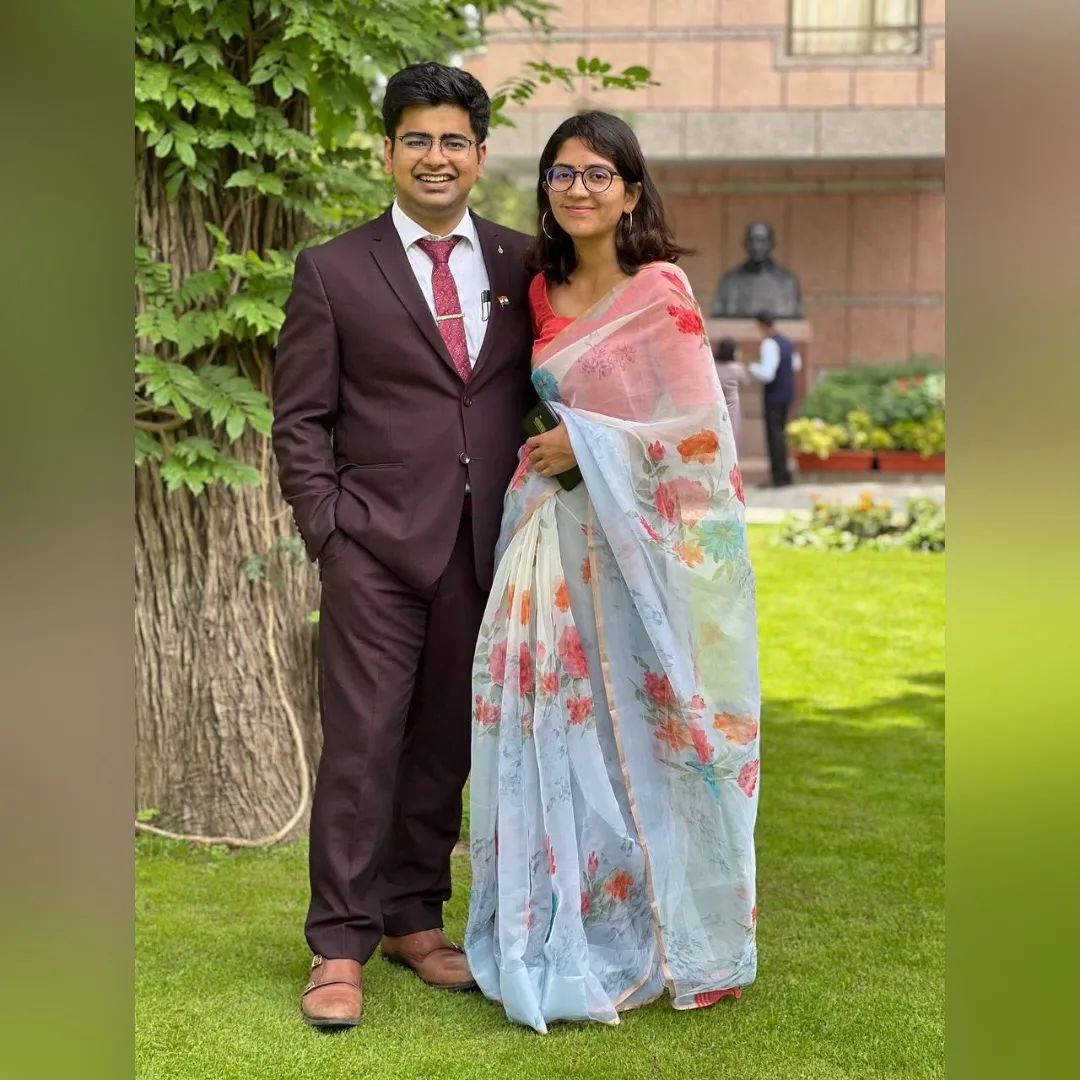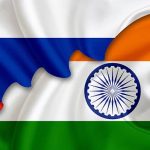
• There have been ties between India and South Korea since 48 AD. From 723 to 729 AD, a Korean Buddhist monk named Hyecho or Hong Jiao went to India. He wrote about his trip in a book called “Pilgrimage to the Five Kingdoms of India.” This book tells a lot about Indian culture, politics, and society. Nobel Prize winner Rabindranath Tagore also wrote a short song called “Lamp of the East” about Korea’s great past and bright future in 1929.
• After Korea got its independence in 1945, India played an important and good part in Korean affairs. During the Korean War (1950–1953), both sides agreed to a settlement put forward by India, and on July 27, 1953, the war ended. Indian officials worked hard to solve the social problems caused by the war, and their efforts were praised by everyone. Republic of Korea (RoK) appreciates that India has always stood up for the peaceful union of the two Koreas.
• Relations between India and the Republic of Korea (RoK) have come a long way in recent years. They have become truly multidimensional, thanks to a large convergence of interests, respect, and high-level exchanges.
• In 1962, bilateral consular ties were set up. Over time, the open market policies of the ROK found common ground with the economic liberalisation and “Look East Policy” of India.
• Relations between India and South Korea have come a long way in the past few years. With the coming together of India’s Act East Policy (AEP) and South Korea’s New Southern Policy (NSP), economic and military ties between the two countries have gotten stronger.
Table of Contents
- 1 The Vision of the New Southern Policy
- 2 Areas of Cooperation
- 3 Political
- 4 Commercial
- 5 Science and Technology
- 6 Nuclear and Defence
- 7 Cultural
- 8 Indian Community
- 9 Multilateral Platforms Shared by Both the Countries
- 10 How Important South Korea Is to India
- 11 Strategic
- 12 Infrastructure:
- 13 How important India is to South Korea
- 14 Significance for the Region
- 15 Recent MoUs:
- 16 Concerns
- 17 The Next Steps
- 18 Conclusion
The Vision of the New Southern Policy
• The Korean government’s New Southern Policy aims to strengthen its relationships with ASEAN and India as key partners in the southern region, raise this partnership to the level of Korea’s traditional four major diplomatic partners (the U.S., China, Japan, and Russia), develop values that can be understood by others, and build a “people-centered” community that benefits everyone.
• The New Southern Policy aims to create a multilateral economic and diplomatic framework to deal with the U.S.’s focus on domestic issues, which has been in full swing since Trump took office, and China’s growing influence in East Asia. • The New Southern Policy puts an emphasis on the so-called “3P community,” which stands for a community of people, prosperity, and peace.
Areas of Cooperation
Political
• On January 1, 2010, the Comprehensive Economic Partnership Agreement (CEPA) went into effect.
• The level of the two countries’ relationship was raised to “Strategic Partnership” in 2010. The two countries’ relationship was changed to a “special strategic partnership” in 2015.
• India has also asked the South Korean government and business world to join the “Make in India” programme as an important partner.
Prime Minister Narendra Modi went to Korea on a state visit in May 2015. This was during his first year in office. In July 2018, the President of the Republic of Korea, Moon Jae-in, went to India. Together with Prime Minister Narendra Modi, he opened what is said to be the biggest mobile phone factory in the world in Noida.
Commercial
• India is Korea’s 15th biggest trading partner. In January 2010, the Indian Chamber of Commerce in Korea was set up to help Korean companies that want to do business with India. Since CEPA went into effect in 2010, trade and economic ties have been picking up speed. In 2018, the two countries’ yearly trade reached USD 21.5 billion, the first time it went over USD20 billion.
• Since 2000, Korea has put $7 billion into India. Large Korean companies like Samsung, Hyundai Motors, and LG have also put in a lot of money there, which is believed to be over $3 billion. India has already put more than $2 billion into ROK.
• There are 603 big and small Korean companies with offices in India, according to the government. In 2016, a special project called “Korea Plus” was started to promote and help Korean investments in India.
• An early end to negotiations to update the ROK-India Comprehensive Economic Partnership Agreement can be a key step towards the goal of increasing bilateral trade to US$ 50 billion by 2030. • South Korea’s total foreign direct investment in India up to September 2020 was about USD 6.94 billion, making it one of India’s biggest investors.
Science and Technology
• During the South Korean President’s visit to India in July 2018, both countries signed five MoUs in the field of Science and Technology. One of the MoUs was to set up the Future Strategy Group, a collaborative platform where both sides will co-fund enterprise-led joint R&D projects in four areas: (i) digital transformation; (ii) future manufacturing; (iii) future utilities; and (iv) health care.
• Both countries agreed to set up the Indo-Korean Centre for Research and Innovation (IKCRI) in India. This centre will be the hub for all cooperative research and innovation programmes between the two countries, such as innovation and entrepreneurship and technology transfer.
• South Korea and India also have a stake in tying together their innovation ecosystems as technology continues to disrupt the global economy.
Nuclear and Defence
• The agreement to work together on civil nuclear energy was signed in July 2011.
It was an important moment in history and showed that India and South Korea work well together.
It gives South Korea a legal way to take part in India’s civil nuclear power business. In 2005, the two countries signed an agreement to work together on defence and logistics, and in 2006, they signed a Memorandum of Understanding (MoU) to work together on the Coast Guards.
• So far, the Indian and South Korean Coast Guards have worked together in five drills to improve their ability to work together.
• The most recent of these drills was called Sahyog-Hyeoblyeog 2018 and took place off the coast of Chennai.
Sahyog-Hyeoblyeog is part of a plan for the two Coast Guards to sign a Memorandum of Understanding (MoU) to improve marine security in the Indian Ocean Region.
• In May 2021, the India-Korea Friendship Park was opened in a ceremony at the Delhi Cantonment by the Indian Defence Minister and his South Korean counterpart.
The park was made to remember what the Indian military force did during the Korean War from 1950 to 1953.
Cultural
• In April 2011, an Indian Cultural Centre (ICC) was opened in Seoul to help Indian and Korean people share their cultures with each other.
• In June 2011, the first Festival of India in Korea was held.
• Classes in Indian Yoga and Kathak-cum-Contemporary dance are held weekly at ICC by the Indian Council for Cultural Relations. ICC plans lectures, exhibitions, and events from time to time.
• Jawaharlal Nehru University (JNU) and Delhi University (DU) each have courses in Korea Studies and Korean Language Courses.
• Because there are a lot of Koreans in Tamil Nadu, Madras University opened a Department of Korean Studies.
• The Hankuk University of Foreign Studies (HUFS) in Seoul and the Busan University of Foreign Studies both have departments that focus on India.
• Since a few years ago, India and RoK have been exchanging youth groups every year.
• The Indian government gives scholarships and grants to Korean students who want to study in India every year.
• Every year, the RoK Government gives funding to people from India who want to study Korean language and literature.
• Both countries agreed to speed up work on a joint project to improve the statue of Queen Suriratna (Hur Hwang-ok) in Ayodhya.
Indian Community
• In 2012, a deal was made to make visas easier to get. There are almost 11,000 Indians living there.
• A lot of Indian students are going to graduate school and getting their Ph.D.s, mostly in the pure sciences.
• In the past few years, a lot of professionals, mostly in IT, shipping, and the car industry, have moved to ROK.
• The Indian high commission’s Coordination Committee works to get all the Indian Associations in ROK on the same page.
• The Committee is a good way to share information and plan cultural events and activities.
the United Nations, the World Trade Organisation, ASEAN Plus, the East Asia Summit (EAS), and the G-20.
How Important South Korea Is to India
Strategic
• India’s “Act East” strategy can’t work without ROK as a partner.
• India knows how important the bilateral relationship is and how it could help bring peace, stability, and safety to the Asia-Pacific region.
• ROK said it was in favour of India joining the Nuclear Suppliers Group.
• Since the Republic of Korea is a member of APEC, it is important that it backs India’s involvement.
• The Rim of the Pacific Exercise (RIMPA) is something that Republic of Korea takes part in. Korea’s help is important for maritime security in the Indo-Pacific area because of this.
Infrastructure:
• The UK can help India with its “Make in India” programme.
• Working together to build smart cities.
• Korean Defence Industry Co-operation in Shipbuilding is very important for India. India and South Korea have also signed a memorandum of understanding to work together on making ships for the military.
How important India is to South Korea
• India’s needs for development give Korean companies business chances. Digital India, Make in India, and Smart City Mission are all examples. India is seen as a key player in the Indo-Pacific region. The aggressiveness and one-sided actions of China in the region bring the Republic of Korea and India together to work on peace and security in the region.
Significance for the Region
• Both countries are careful and worried about North Korea’s (DPRK) nuclear weapons and ballistic missile programmes, which can be a major threat to security on the Korean peninsula. Both countries want to get rid of all kinds of terrorists.
• India’s strong economy and South Korea’s ability to make things give the area business opportunities.
Recent MoUs:
• Avoiding Double Taxation and Stopping Tax Evasion with Regards to Income Taxes.
• Working together on the development of electric power and new energy industries.
• Youth Cooperation Is Important.
• Working together on highways and road transport.
• Working together on logistics and maritime transport.
Concerns
• India and South Korea are both worried about China’s rise, especially when China acts aggressively.
• Both are getting more and more worried about Chinese technology in India.
• The leaders of India and South Korea would have to deal with some basic issues. This is also about how much trust there is between Indian and South Korean companies.
• There isn’t as much trust between business people in the two countries as there should be.
• Even though Delhi and Seoul formally announced a strategic partnership ten years ago, they have had a hard time putting real meaning into it.
• India, which has started to support the idea of an Indo-Pacific, has not put Korea at the top of its list of goals in Asia.
• There is a lot of worry about the prosperity that globalisation has given to Asia over the past few decades.
• India has also been upset about its trade imbalance, which has grown from $5 billion in 2008-09 to $8 billion in 2020-21.
The Next Steps
• India and South Korea should make their summit meetings more regular and hold them more often. This will tell businesses and industries in each country how they can work together.
• After Japan, South Korea has the most advanced technology of any country in Asia. So, if India and Japan worked together, it would definitely help India become a more powerful country.
• Economic partnerships need to be strengthened as soon as possible. As a trade war between the US and China heats up, Delhi and Seoul need to open up their own trade with each other.
• India and South Korea would have to work together on next-generation technologies and core technologies, while also strengthening their current ties.
• The two sides also need to work on improving security and military cooperation between themselves and working with other countries to create a stable balance of power in Asia.
• New Delhi and Seoul should work on building alliances of flexible middle powers in Asia to lessen the effects of the unstable relationship between the US and China.
• The business communities of both countries need to take advantage of the ways their economies complement each other to increase investment, encourage joint projects, and work towards the goal of increasing bilateral trade to $50 billion by 2030.
• At a time when U.S. foreign policy is erratic and unpredictable and when China is making deliberate moves towards global dominance, it is important that the relationship between South Korea and India grows and gets stronger to help keep the area stable.
Conclusion
• Strong programmes between university and business in areas like clean technology, robotics, and automation can help the two countries deal with their economic and social problems. Cooperation in the space sector also has a lot of potential. Other areas with a lot of potential include defence and security cooperation and internet security. Strong programmes in both academics and the business world.
• India and South Korea’s relationship has moved to the next level, but the real test is whether or not they can keep going at this fast pace.











![Ancient Indian History Notes [Part 5] Jainism & Buddhism 1625199098796_compress53](https://iasbio.com/wp-content/uploads/2021/07/1625199098796_compress53.jpg)




